by Maria Giulia Marini and Alessandra Fiorencis
The studies of the beneficial effects of the Arts on the organism, from the visual (drawing, painting, craftsmanship, painting, photography, cinema, sculpture and textiles) to the literary ones (writing, reading, literary festivals), to the fruition of culture (museums, galleries, art exhibitions, concerts, theatre, community events, cultural festivals and fairs), to the online arts (digital animations and computer graphics) are addressed by a evidence-based report on wellbeing by the World Health Organization (WHO), drawn up in November 2019. [1]
The WHO itself suggests using Arts to promote health and well-being and social cohesion. This practice represents a great revolution: the most important world health institution, inclusive of any form of physical diversity, mental, social, economic, spiritual and cultural, addresses health professionals, urging them to open medical offices, hospitals, clinics, waiting rooms and rehabilitation centres to art.
Even if what is beautiful is subjective, art impact is scientifically demonstrated by neuroscience. Neuroaesthetics scholars, evaluating the interaction between brain, body and art, have discovered that the centre of pleasure and reward exists in the cortical part of our brain. This centre is activated when people listen to music considered pleasant or look at a picture, or a painting they find beautiful: the centre of cerebral pleasure is rewarded with a neurotransmitter that puts us in a condition of calm, lucidity, planning and resilience.
In September 2019, in almost sync with the WHO, the Healthcare Area of ISTUD Foundation launched an online survey to individuate the ideal artworks that people want to see in moments of fragility: we think that among the languages of care – alongside words, gestures and sounds – art is also therapeutic, made available in places where diagnosis, therapy, surgery, rehabilitation and other care activities are experienced. However, openness to beauty must be integrated with the safety, cleanliness and maintenance of care facilities, aspects that remain the first step to build trust in patients towards healthcare organisations.
From the studies that reported art impact on individuals and patients, we understood the positive effect of looking at artworks. Thus, the questions we asked ourselves as researchers are: Which artworks can lead us to well-being? Are there common trends to bring to care settings designers and providers, through installations dedicated to visual art? Are there tastes diversified by age and gender?
The online survey opened September 30, 2019, and closed December 16, and was answered by 105 people, 79% women, 20% men, and 1% who do not define their gender. Respondents were graduates in 82% of the cases, graduates in 13%, in possession of a medium or unspecified qualification in about 4%. Each respondent could list up to ten artworks to see in a condition of fragility.
We collected 400 preferences, which means an average of 2.6 artworks mentioned by people; however, this data is raw, because more than half of the respondents indicated at least five artworks, while a few summarily wrote All the Pre-Raphaelites, All the photographs of Salgado, All Klimt’s artworks, All the Renaissance artworks, thus making this value average of 0.26 a purely statistical but not significant data.
Unlike what we saw within the online survey on music, deeply varied, in the 400 entries there is a convergence towards some painters, which appear repetitively: in 51% of cases (204 replies) we find Vincent Van Gogh ( 39 preferences) with the Starry Night and the Wheatfield with Crows, then Claude Monet (30 responses) with The Water Lilies, and then Gustav Klimt with The Kiss, Michelangelo Buonarroti, Édouard Manet, Jan Vermeer, Leonardo Da Vinci, Sandro Botticelli, Edgar Degas, Caravaggio and Pierre-August Renoir (up to 8 recurrences for the last three). We observe how preponderant is the search for a landscape so radiant in Impressionist and Post-impressionist paintings, and also present in the Renaissance art of Leonardo and Botticelli. The need for nature, for light, for movement represents the most common request of people when they are ill: Caravaggio and Michelangelo instead point to biblical gestures of sacred art (from Creation to Judith) and the importance of the human figure. The Flemish Vermeer likes for the precision, calmness and balance represented by his characters inserted in orderly and domestic environments; a small percentage of people want to create a vacuum, and resort to Vasilij Kandisnkij, or to the surrealism of René Magritte. However, in an inter-generational way, Impressionism and Post-Impressionism, together with the Italian Renaissance, are cited by most respondents. We therefore have a first answer: Nature and Human Figure inserted in a landscape to set up the ideal art gallery.
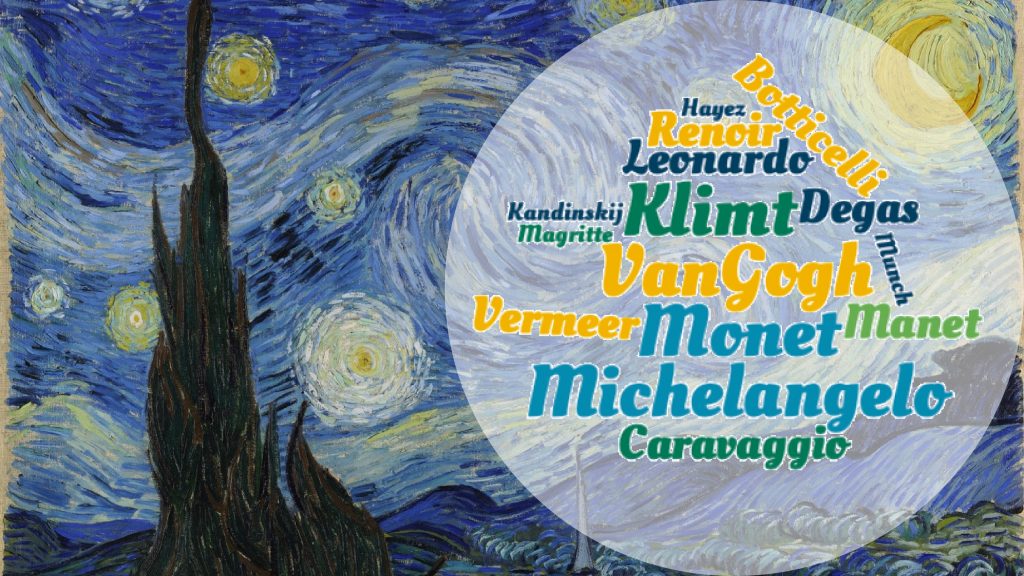
The artistic preferences of the intermediate-range of recurrences, which represent 24% (from 3 to 7 preferences), take up the surrealism with Joan Mirò and also open to magical realism, with Edward Hopper (preferred by men) and Frida Kahlo (preferred by women, now an icon). The romanticism of Caspar Friedrich stands out above all, the man alone in front of the abyss of nature, and the loving romanticism of Francesco Hayez with The kiss, to explicit the need for a union.
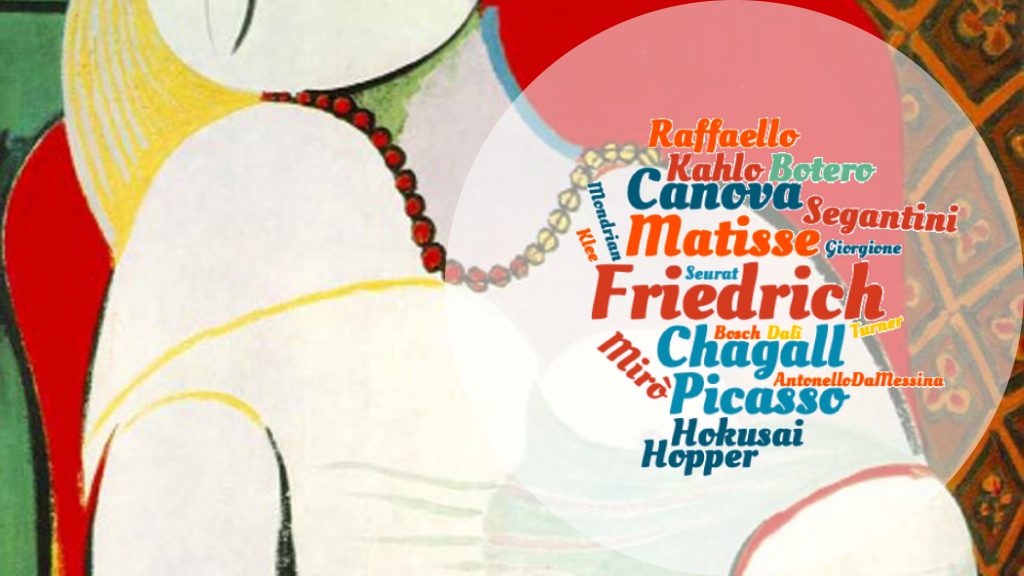
Single or double answers are pulverised, representing the maximum dispersion of the investigation: the works are erratic but entirely traceable to clear artistic trends. It is contemporary art that gathers most of these preferences, from Jackson Pollock, Banksy, Giorgio De Chirico, Jean-Michel Basquiat, Andy Warhol, Alberto Giacometti, Piero Manzoni. Macchiaioli and Piero della Francesca still remain, evidently too complex and enigmatic to see in moments of weakness. Photography is also dispersed, appearing only with two names, Steve McCurry and Sebastião Salgado.
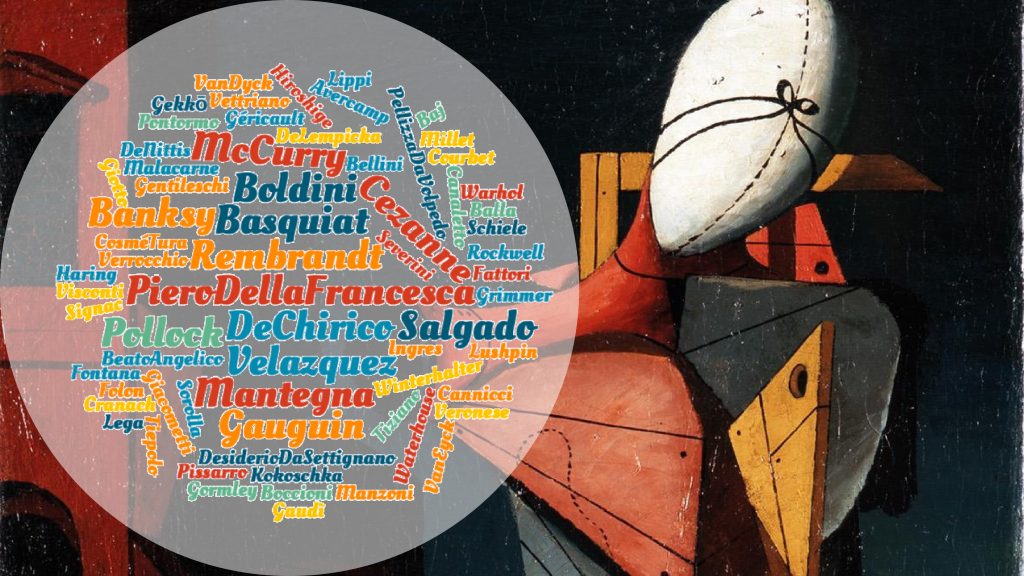
Compared to the styles, we have more answers than the single artworks, because – as we anticipated – some indicated All classical art, All Renaissance art, and so on.
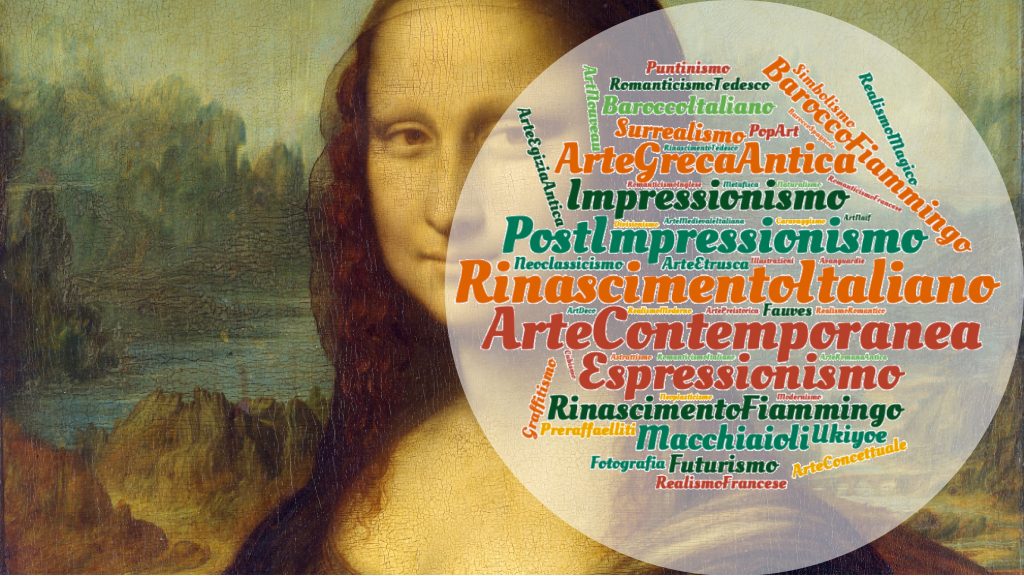
Here the survey opens to the recurrence of the post-impressionist style (in particular Van Gogh), impressionist and Italian and Flemish Renaissance. Even contemporary art remains very present, in its multiplicity of authors, while the classical Greek and Egyptian art are mainly present in the age group over 55 years. Also present are the Surrealists and the Japanese tradition of Ukiyo-e (the ephemeral), embodied in the great wave of Katsushika Hokusai: the disease can be like a big wave, but the fishermen’s boat – the body, the carers – keeps, while in the background the dry land remains, with the static solidity of Mount Fuji.

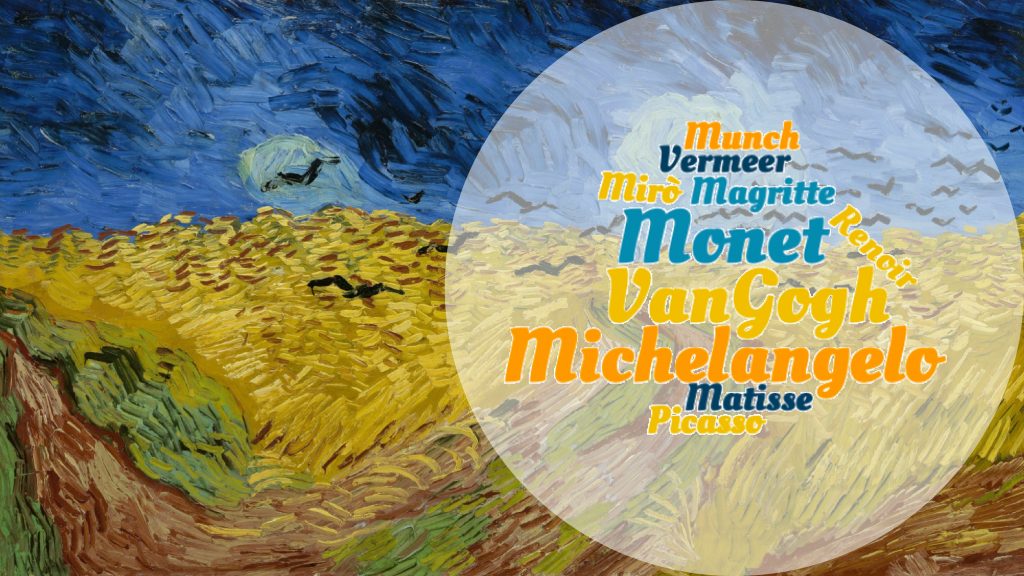

There is a small gender difference in the answers: women prefer Monet’s sweet and enlightened nature, while men prefer the metaphysics of Hopper’s landscapes, but apart from this detail, tastes are superimposable.
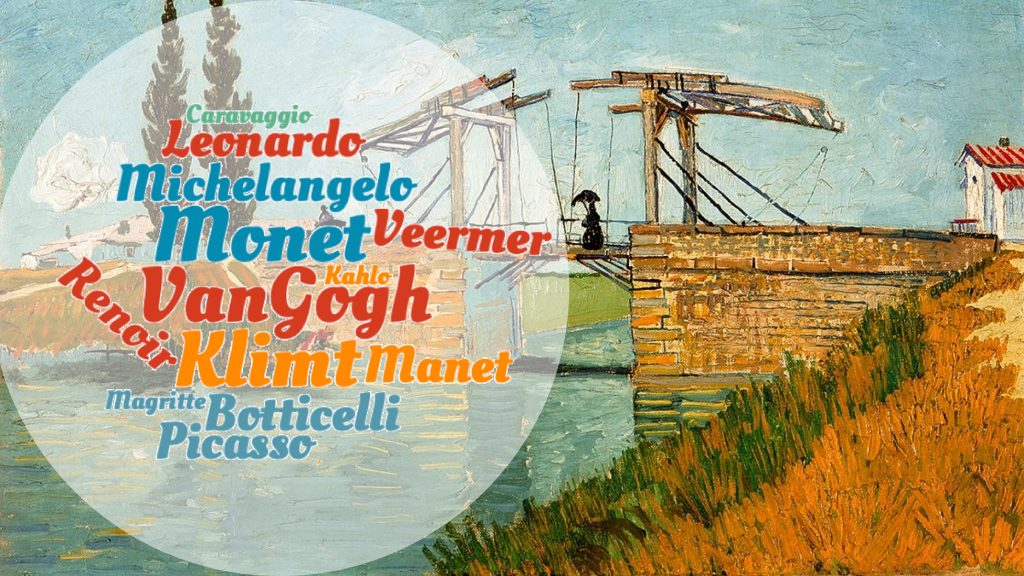
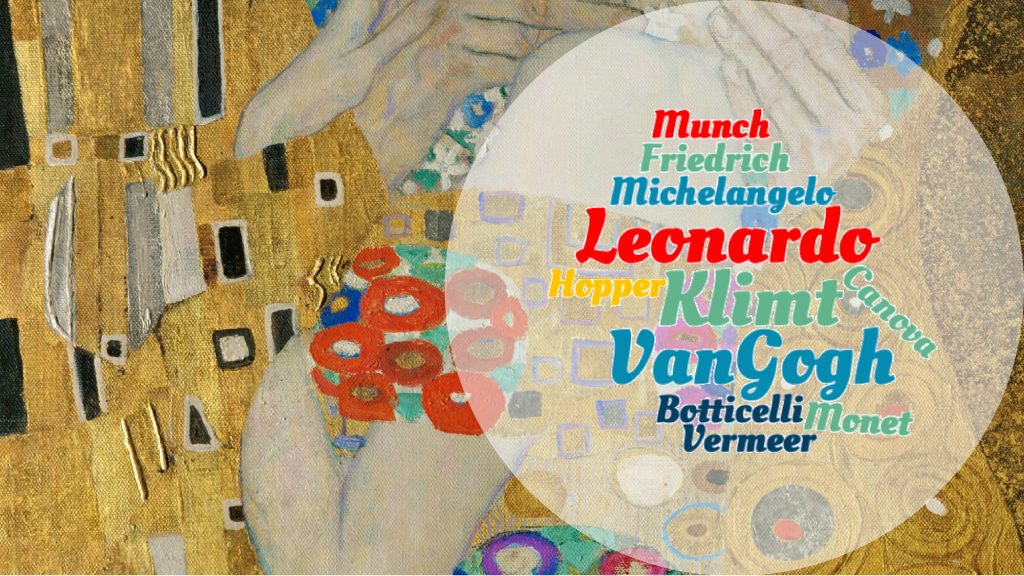
There was no difference between graduates concerning the choice of artworks. It is true that our survey has been disseminated through our channels and social media and has not reached the people who do not take part in it; we, therefore, have a population of respondents with a higher educational qualification than the average of the Italian population.
Some titles of the works are Starry Night, The Sunflowers, Vincent’s Room in Arles, Wheatfield with Crows, Almond Branch in Bloom (Van Gogh); Poppies, The water lilies, Impression, sunrise (Monet); still, we find trees in Klimt (The tree of life) and in the Japanese tradition, and flowers in the works of Botticelli (La primavera). A colourful nature, in movement, growing – spring, in fact: every disease, in fact, involves an “autumnal” loss, and it is thanks to the modelling on the artworks full of vitality that people potentially draw the energies to react, act and live with the disease, finding a new lifestyle.
Also important is our human nature, which expresses itself with its passions in romanticism, art nouveau and surrealism, in the name of Love: The Kiss by Hayez, by Klimt, by Magritte. Other titles lead us to meditate, such as Leonardo’s Ultima Cena and La Gioconda, Vermeer’s Girl with Turban, Magritte’s Empire of Lights, the Roman Pantheon, Auriga of Delphi, Jean François Millet‘s Angelus, the Triptych of delights by Hieronymus Bosch. Others express a greater restlessness, such as The Raft of Medusa by Théodore Géricault, up to the pain and anguish of Guernica by Pablo Picasso, The Scream of Edvard Munch, The Dead Christ by Andrea Mantegna, La pietà Rondanini by Michelangelo, The broken column of Kahlo.
How can we use this information now? Probably we cannot take the originals from the museums, but we can use the web to enjoy these images: we can print and affix them to the walls, we can arrange on the screens some installations that they penetrate into the picture, enlarging the details, thus allowing people, carers, patients, family and friends to enter.
Generally, in care settings are displayed artworks created by the patients themselves, minus those mentioned here from museums: given that, in the visual arts, the most well-known image in the world is the Mona Lisa, second in the Starry Night, third L’Ultima cena, Fourth The Creation of Man, and Fifth The Girl with the Turban, our collection can in a certain sense go beyond the different cultural and social contexts and rest on known universals of art and be exposed through appropriate installations in the hospitals and clinics. You can experience originality in the way of reproducing an image of universal beauty. Digital technology can help us, offering the vision of these artworks in waiting rooms: the roofs, which are generally left white, are usually the point of attention of the patient in bed or on a stretcher; paintings are often hung on the walls, while roofs are left bare and cold.
How to interact with art? Through narrative medicine, it will be possible to observe a picture, evaluate its colours and shapes to understand the visual, emotional, and reflective impact that the artwork inspires us. Then it comes the creative part: we can choose an entrance into the picture, if it’s a landscape, and invents a story, or, if it’s a portrait, invent a dialogue with the Hand of God in the Creation of Man, with the Head of the Medusa, with the head of The scream, or with a Madonna with her Child, or with Degas’ Ballerinas. Then, we can ask how the experience of using art has been: not only patients but also carers can stop a little to regenerate themselves in front of beauty, and benefit in their arduous care work.
We wish to thank all the people who have joined the survey and have left us a precious testimony that can genuinely inspire health organisations to renew themselves, with economically sustainable solutions. Light, colour and art, from ars which means technique: the Lascaux caves, painted about 17,500 years ago, represent the first art expression, as far as we know.
The cave contains about 6,000 figures, which can be grouped into three main categories: animals, humans and abstract signs, indicating that the imitation of nature, of the human figure and the conceptual symbol, were inherent in the artists of that time. Scholars tell us that probably this art was used to build a sanctuary, a place of worship: the first artistic testimonies in the history of humanity were linked to the spiritual component. In our highly secular society, the search for the meaning of Life and Death appears just when disease, ageing, a change in initial health conditions, trauma and dying occur.
And then come the basic questions that give the title to Gauguin’s canvas: Where do we come from? Who are we? Where do we go? These three questions were pervasive in our survey, and we can add – with the onset of illness – a fourth and a fifth ones: Why me? And now what do I do?
The arts, along with the art of medical care, can help us to find an answer, regardless of age, gender, country of origin, work, educational level, overcoming the possible initial resistance, perhaps due to ignoring art, prejudicially considered as belonging to the world of the wealthy; let us remember that Van Gogh’s Starry Night is now printed and marketed in scarves and gloves, and is found on outdoor market stalls, where everyone goes.
[1] Daisy Fancourt, Saoirse Finn. What is the evidence on the role of the arts in improving health and well-being? A scoping review, World Health Organization, November 2019
